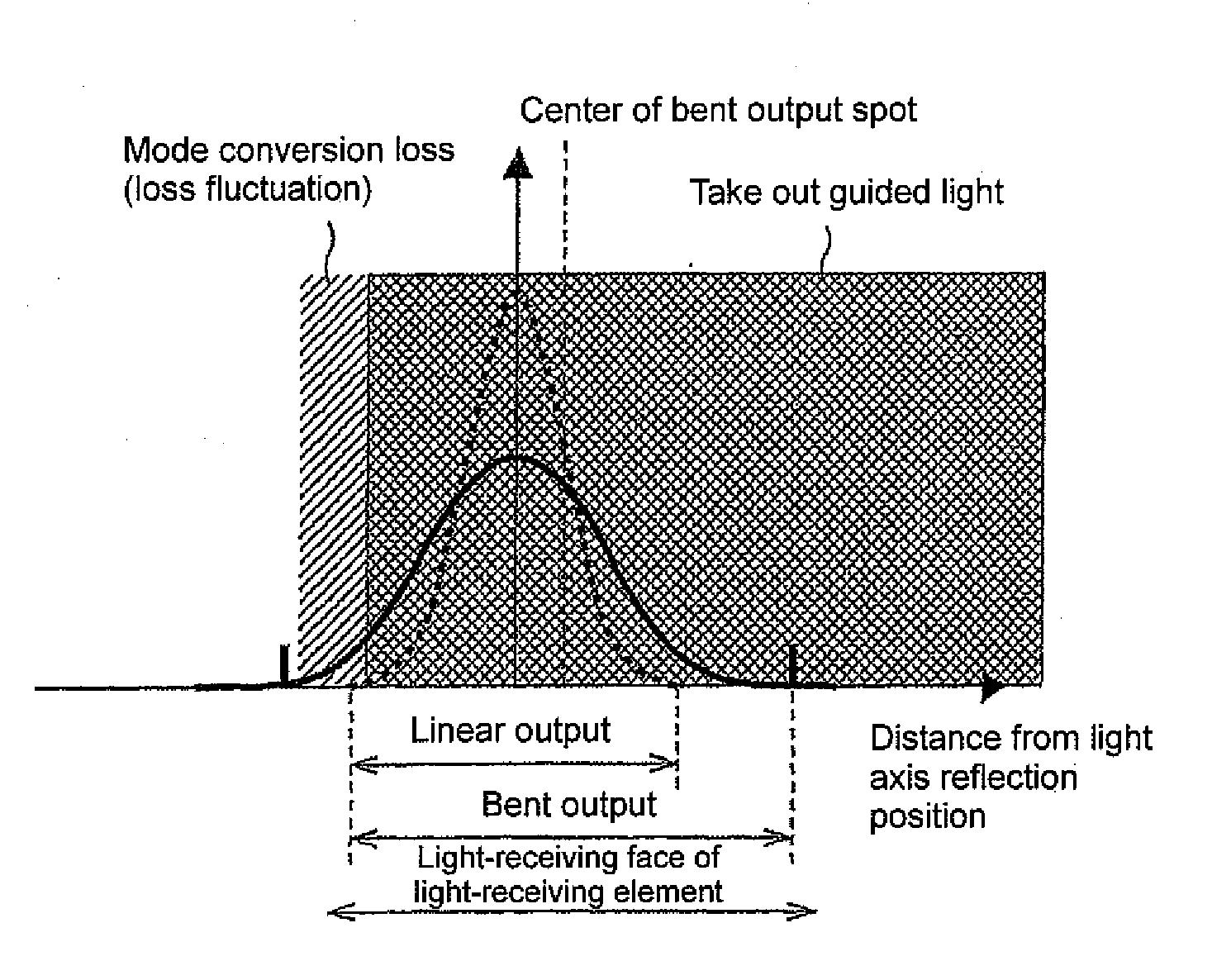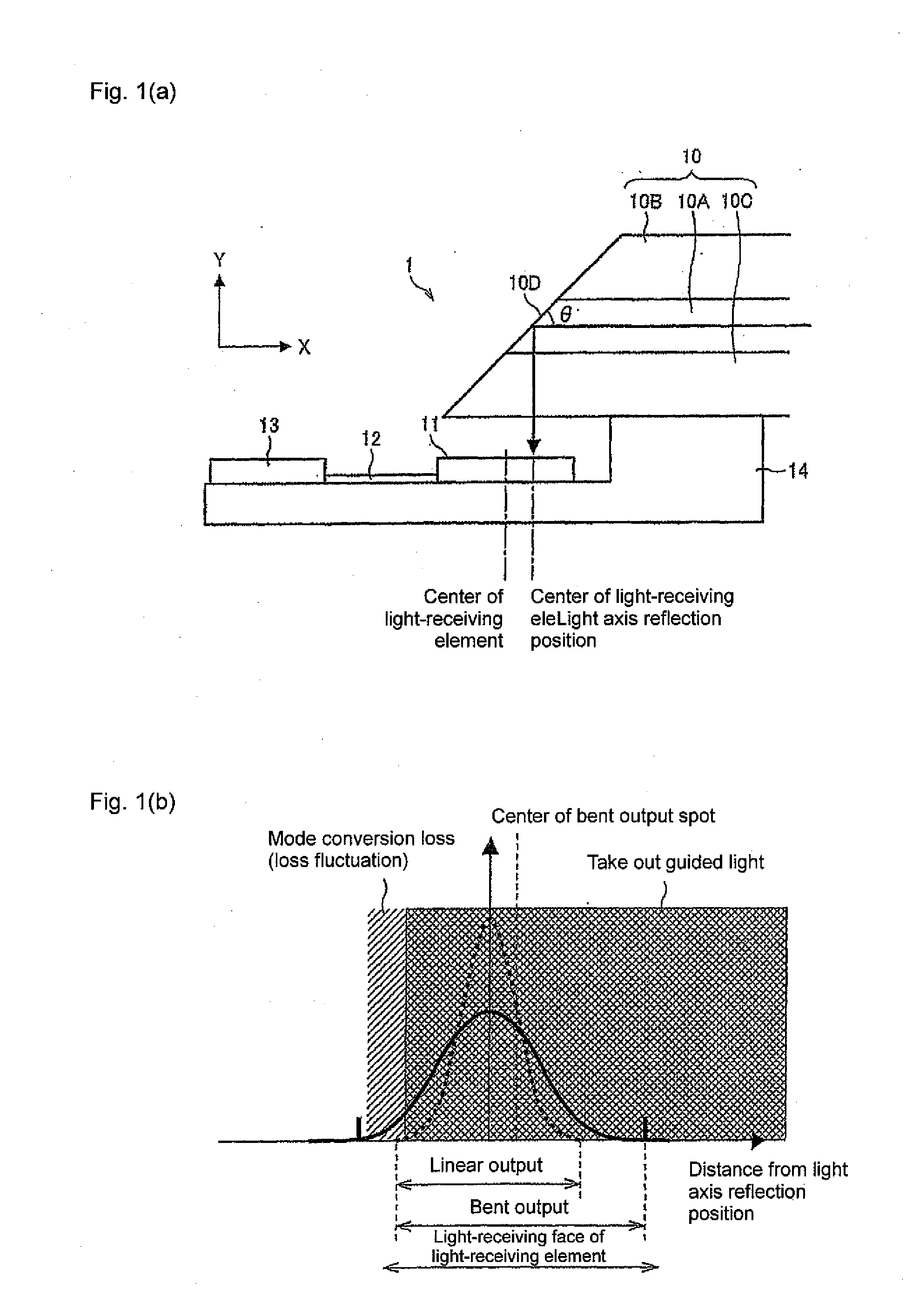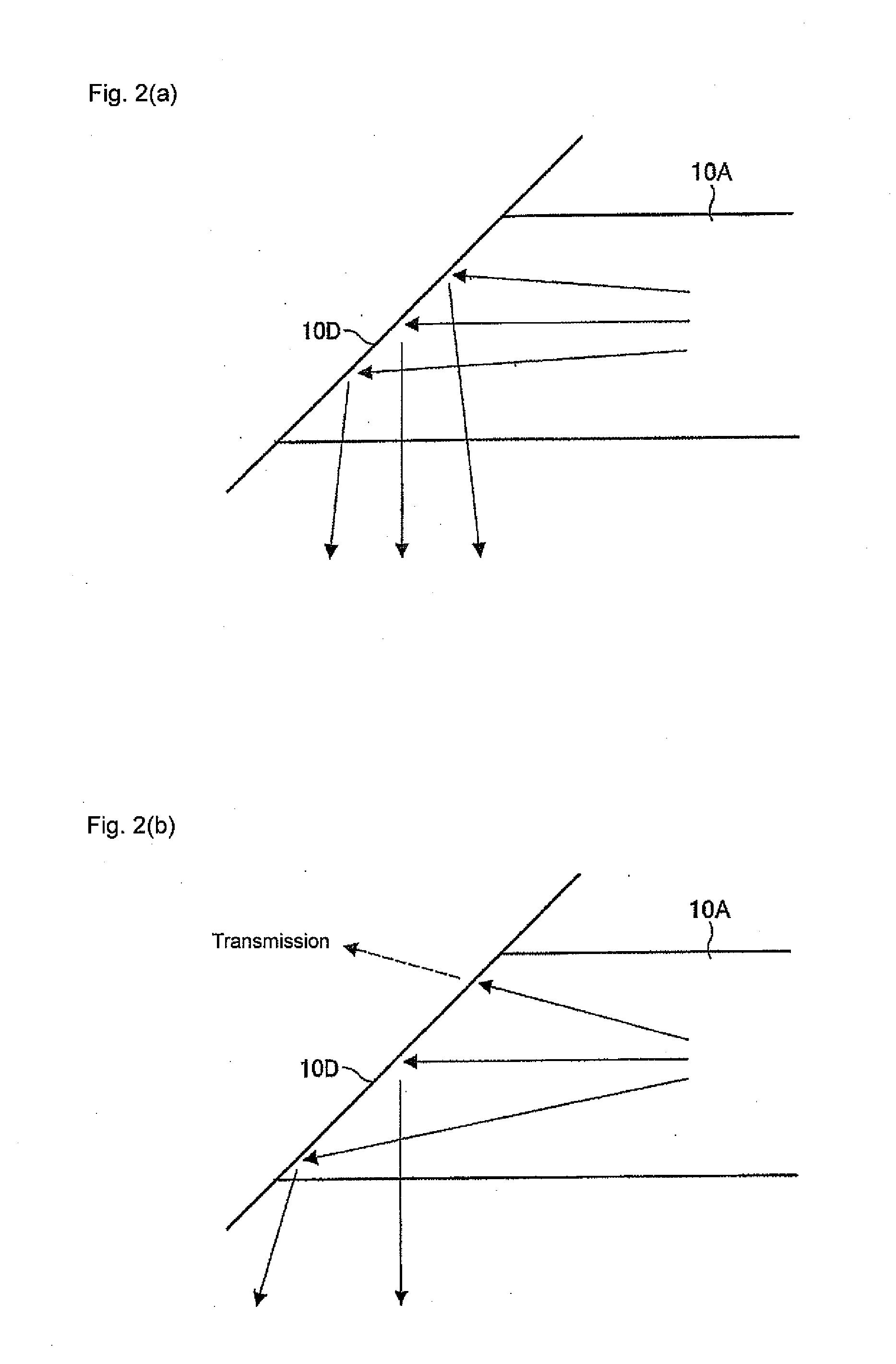Optical cable module and apparatus employing it
a technology of optical cable module and optical waveguide, which is applied in the direction of optical waveguide light guide, bundled fibre light guide, instrument, etc., can solve the problems of large loss difference due to the change in optical waveguide, change in optical path conversion loss, spot-size mismatching loss,
- Summary
- Abstract
- Description
- Claims
- Application Information
AI Technical Summary
Benefits of technology
Problems solved by technology
Method used
Image
Examples
embodiment 1
[0038]Referring to drawings, the following description will discuss one embodiment of the present invention. First, referring to FIGS. 1(a) and 1(b), one structural example of an optical cable module according to embodiment 1 will be described.
[0039]An optical cable module 1 shown in FIG. 1(a) is mainly configured by an optical waveguide 10, a light-receiving element 11 and a supporting substrate 14 on its end portion on the light-releasing side. The end portion of the optical waveguide 10 is secured onto the supporting substrate 14 by a bonding process or the like, and the end portion of the optical waveguide 10 and the light-receiving element 11 are secured in the relative positional relationship thereof. Moreover, the optical cable module 1 may be provided with an electric wire 12 and an electrical connection unit 13 so as to easily take out an electric signal outputted by the light-receiving element 11.
[0040]Here, the end portion of the optical cable module 1 on the reversed sid...
embodiment 2
[0058]Referring to Drawings, the following description will discuss another embodiment of the present invention. First, referring to FIGS. 5(a) and 5(b), one structural example of an optical cable module according to embodiment 2 will be described.
[0059]An optical cable module 3 shown in FIG. 5(a) is mainly configured by an optical waveguide 30, a light-receiving element 31 and a supporting substrate 34 on its end portion on the light-releasing side. The end portion of the optical waveguide 30 is secured onto the supporting substrate 34 by a bonding process or the like, and the end portion of the optical waveguide 30 and the light-receiving element 31 are secured in their relative positional relationship. Moreover, the optical cable module 3 may be provided with an electric wire 32 and an electrical connection unit 33 so as to easily take out an electric signal outputted by the light-receiving element 31.
[0060]Here, in the same manner as in the optical waveguide 30 of the optical ca...
PUM
 Login to View More
Login to View More Abstract
Description
Claims
Application Information
 Login to View More
Login to View More - R&D
- Intellectual Property
- Life Sciences
- Materials
- Tech Scout
- Unparalleled Data Quality
- Higher Quality Content
- 60% Fewer Hallucinations
Browse by: Latest US Patents, China's latest patents, Technical Efficacy Thesaurus, Application Domain, Technology Topic, Popular Technical Reports.
© 2025 PatSnap. All rights reserved.Legal|Privacy policy|Modern Slavery Act Transparency Statement|Sitemap|About US| Contact US: help@patsnap.com



